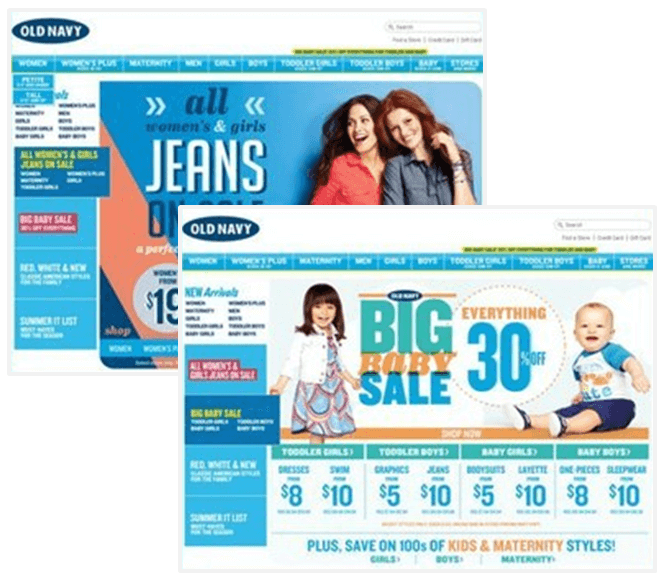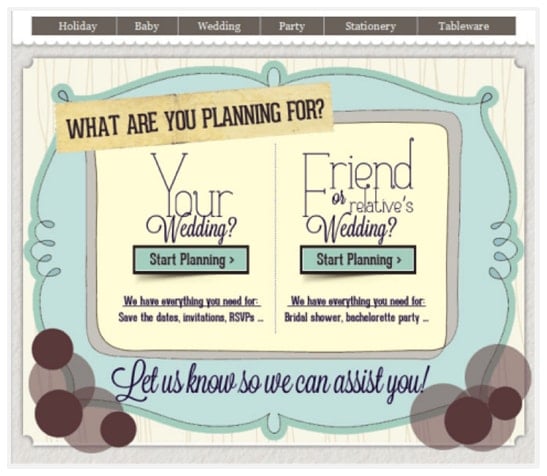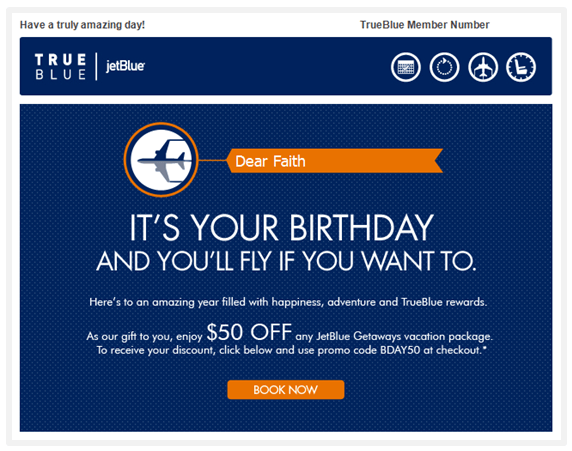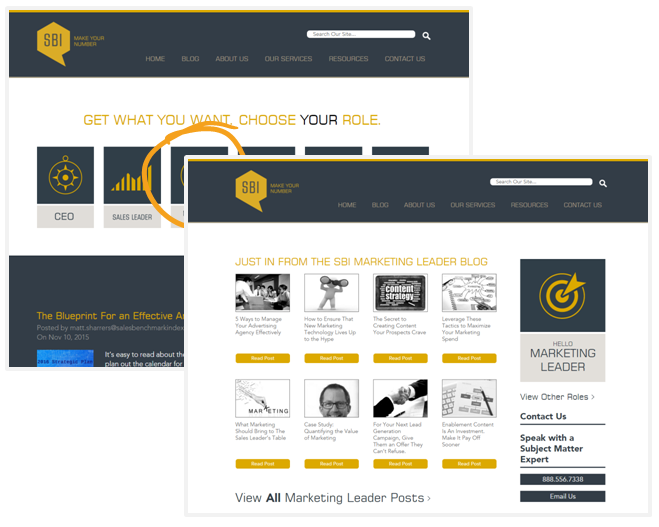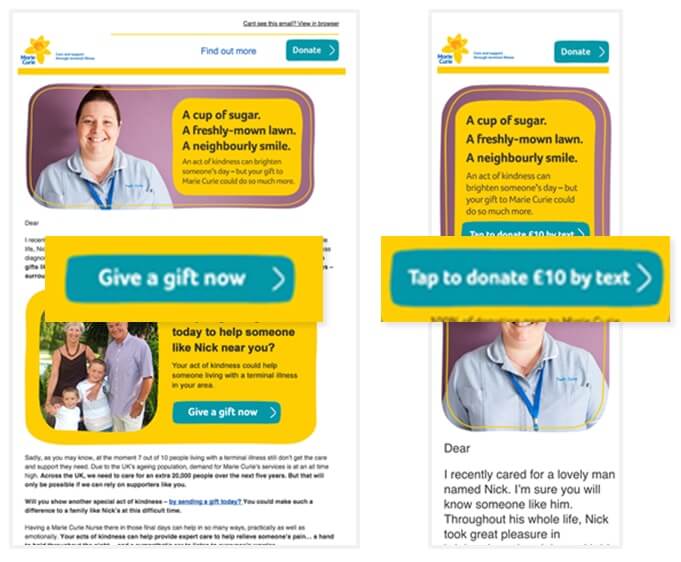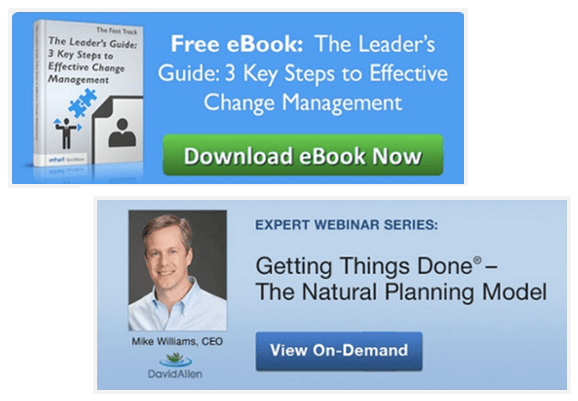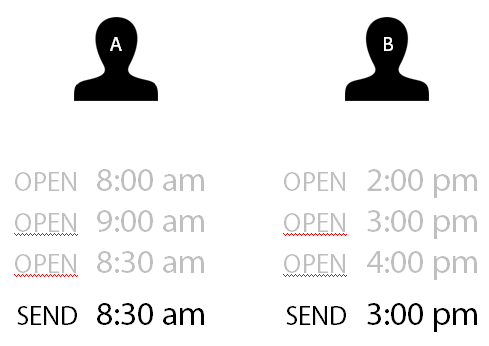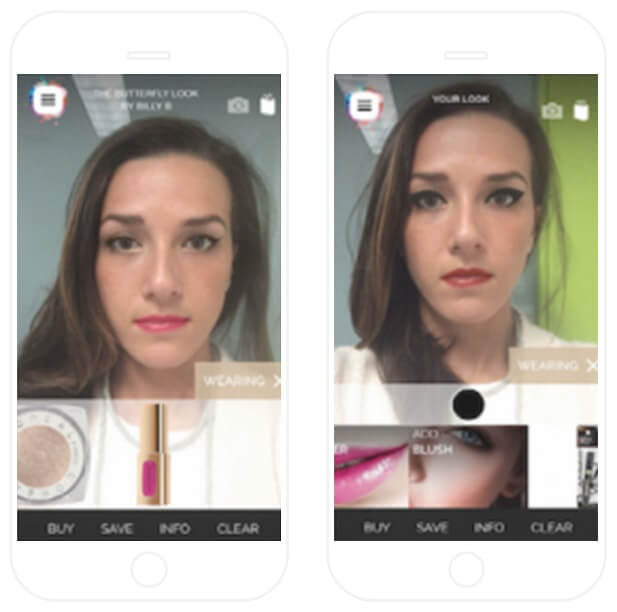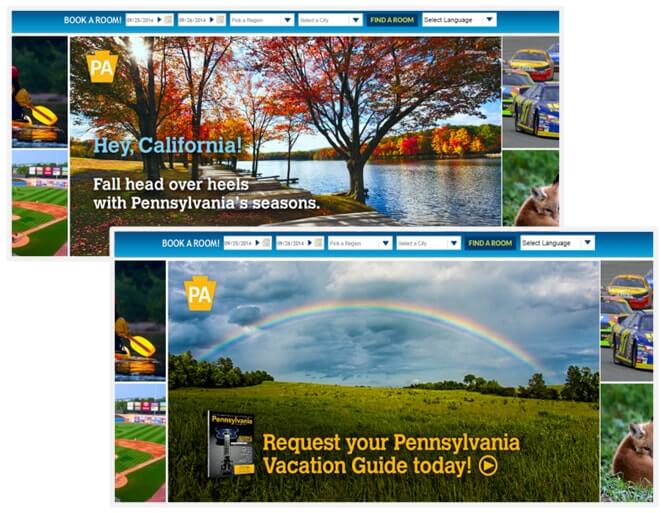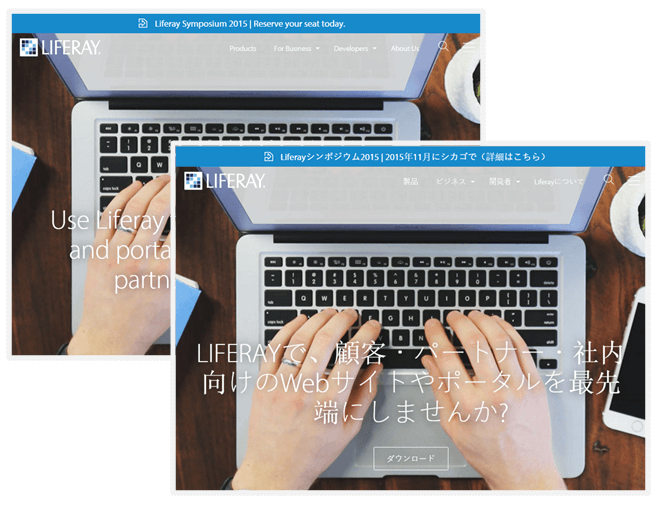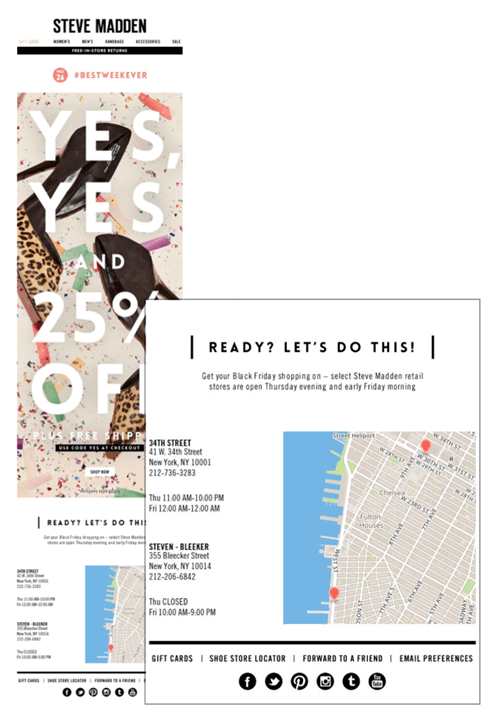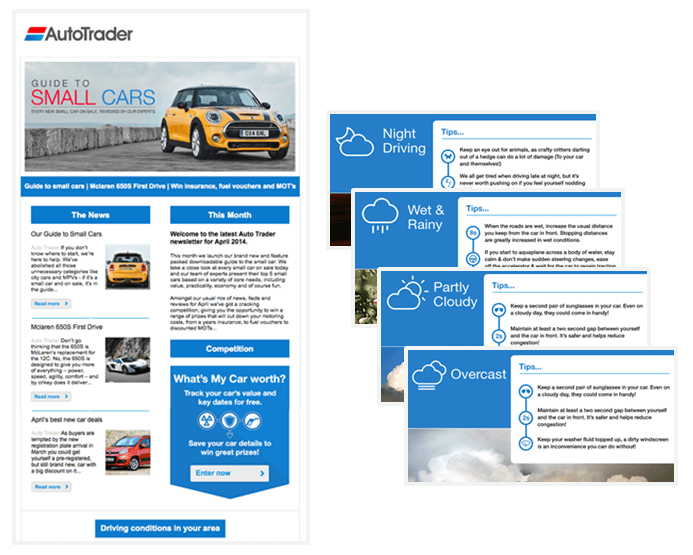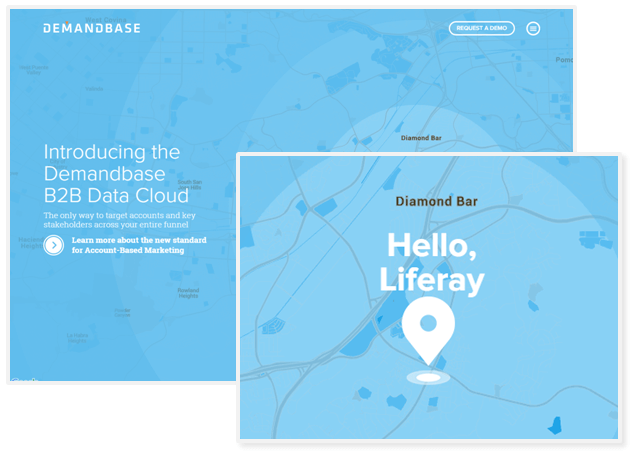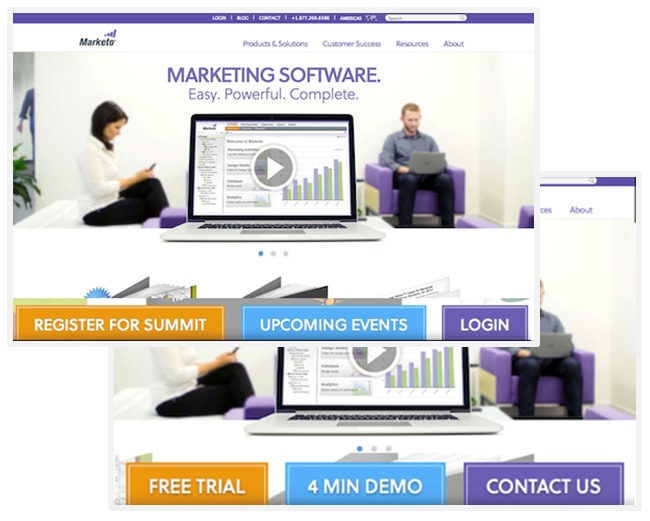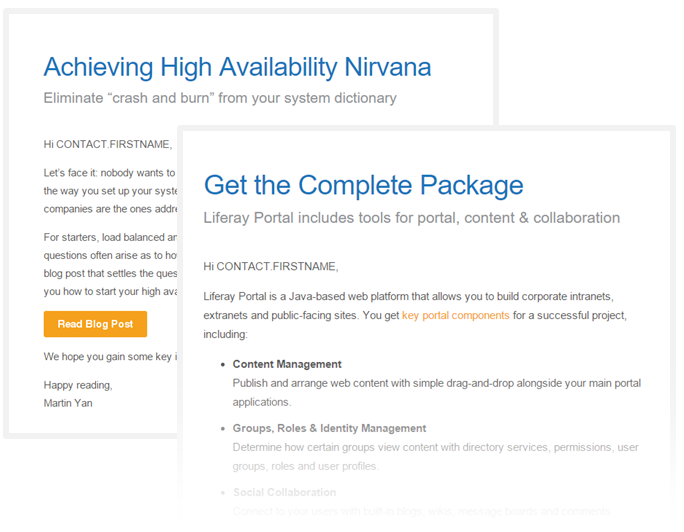Personalized marketing has become a vital differentiating factor for many businesses. Increasingly, marketers are using their knowledge of the consumer to provide an experience that is unique and relevant to his or her preferences. In turn, companies are seeing an increase in conversions and higher customer retention rates.
The idea of web personalization, however, can often bring up concerns around lack of familiarity and resources. Some cite not knowing where to start, or not having a proper automation system to execute on ideas. Remember, personalized marketing doesn't always require automation. It can definitely help achieve some of the more complex methods, but the heart of personalized marketing is about anticipating the customer's needs and setting up the proper infrastructure to fulfill those needs.
Where should you start with web personalization? Below are some practical ideas and examples of methods implemented by various companies. The web personalization examples are grouped by category and presented in order of difficulty from easiest to hardest to achieve.
Explicit Data
Explicit data is information that is intentionally given or provided by customers, such as a name and email address submitted through a form. Other explicit data examples can include information provided in surveys and membership applications. With explicit data, the information is ready and available for immediate analysis and application.
1. Ecommerce Ads - With explicit data, perhaps the easiest and most natural route is to manually create or designate content based on known data. Direct visitors to certain sites or channels that are most relevant to them. For example, Old Navy dynamically changes the homepage banner based on its ability to identify visitors as men, women or parents. //
oldnavy.com
2. Email Content (based on explicit data) - A wedding brand discovered that most of their visitors fell in either one of two categories: getting married or friends/family of those getting married. Those two groups have different interests and purposes, so they designed an email campaign that segmented for those two types of people. Whenever someone would sign up, they simply sent an email that asked which category they belonged to and directed them to the appropriate place. //
paperstyle.com
Another example is delivering content based on important dates. Baskin-Robbins does this with their "Birthday Club" program, celebrating birthdays with coupons for free scoops of ice cream—
apparently with great success. JetBlue also sends special flight offers to customers based on their birthdates: "Treat yourself to a flight and get $50 off."
3. Identified Persona - This can be done by having a system that automatically identifies a visitor's persona, or by explicitly offering various role options on your site and allowing your visitor to choose. In either case, the goal is tailoring your site to provide messaging that appeals to visitors in certain roles. //
salesbenchmarkindex.com
Device Type
People tend to engage with content differently depending on the devices they're using. Equipped with this knowledge, companies can create personalized marketing for prospects and customers in several ways.
4. Call-to-Actions (CTAs) - Feature different actions for users depending on the devices they're using to browse your content. Marie Curie recognized that mobile users are more likely to donate by text, while desktop users are better served donating online. They addressed this by offering a different experience based on device type (taking into account the wording and call-to-action), which resulted in more donations. //
mariecurie.org.uk
Behavior
Understanding what actions your users take and how they engage with your content is crucial. If you're able to apply analytics to your data, you will discover patterns that certain groups of users exhibit and be able to leverage that for more personalized marketing.
5. Download History - A person's download history can reveal certain patterns or tendencies that can help you influence his or herengagement with future offers. For example, Intuit tracks when someone has downloaded an eBook, thus allowing them to offer the second eBook in the series or a similarly-related asset. //
intuit.com
6. Past Open Behavior - If you have a system that can analyze when an individual most frequently opens an email (or if you're willing to manually do the research yourself), you can determine when it's best to send emails to certain prospects or clients in the future.
7. Virtual Reality - L'Oréal executed a personalized marketing program, but ran into the problem of getting reliable data to understand a user's preferences (i.e., users don't want to complete a survey with their makeup preferences, or preferences change over time). Their solution was to develop a virtual reality (VR) app. Using the data of which makeup a user commonly tries on, L'Oréal then makes personalized product recommendations. //
lorealparisusa.com
Geolocation
Geolocation involves having profile and situational data. If users have logged in and expressed some sort of data point about their location, or if it's accessible otherwise, a company can tailor the user experience to a particular region or area. Here are some examples:
8. Banner Ads - Serve up ads on web pages that attract traffic based on the location. This is one of the more basic techniques in web personalization. The Pennsylvania tourism website tends to execute on this strategy. For example, if a visitor living in California visits the Pennsylvania tourism site, the page might display content and images that promote its colorful seasons. //
visitpa.com
9. Language Setting - Website personalization can set the default language based on geolocation. This can also be done automatically, based on IP address. However, a word of caution when determining language by geolocation: the user might be connecting through a VPN or proxy, in a distant location away from that of the intermediary, and/or the user's IP address might also be disguised. //
liferay.com
10. Email Delivery - Configure systems to send emails based on time zone. This is a simple web personalization effort that could be instrumental in affecting engagement rates with emails. (Most automation tools like Eloqua and HubSpot feature this option.)
11. Email Content (based on nearby location) - Getting more granular, some brands are delivering emails based on users' physical addresses. This could be very effective for retail companies that offer deals or discounts at nearby brick and mortar locations. Visitors can stop by at their convenience and capitalize on a particularly enticing offer. //
stevemadden.com
12. Email Content (based on local weather) - This might sound very exclusive, but AutoTrader UK recently did this. Based on open geolocation and weather reports, they were able to send newsletters with driving tips related to the local weather. The personalized marketing campaign resulted in a 93% increased click-through rate. //
movableink.com/autotrader
13. IP Address Lookups - Determine within a given database or company dataset what companies users are working at. With this technology, sales reps can understand the size of the companies that they're targeting. If they access this information, they'll also be able to determine factors like revenue and employee base, in turn enabling targeted content in emails or personal conversations. //
demandbase.com
14. Beacons - Although technically different from geolocation, the concept of
iBeacons promotes similar functionalities. Companies can leverage iBeacons for special offers or discounts based on location within a physical space. This is a common use case for retail and event apps. //
liferay.com
Lifecycle Stage
This type of web personalization takes objective data gathering a step further. Not only does this involve knowing a person's explicit data, it also requires having an accurate understanding of his or her current stage in the buyer's journey.
15. Call-to-Actions (CTAs) - Vendors can provide an original CTA button on their websites and switch it up depending on what type of lifecycle stage the prospect/customer is in. This type of personalized marketing is individually tailored without being intrusive and can be highly effective. //
marketo.com
16. Campaign Enrollment (based on lead buyer stage) - This is the future of web personalization, and what all companies can ideally move toward: funneling prospects toward specific campaigns based on their buyer stage. If you know where someone is in the process of buying a product, you can target emails based on that knowledge. Note, this might require a CRM like Salesforce or a marketing automation system that can identify these values. //
liferay.com
Final Thoughts
In many ways, web personalization is both art and science. It involves a lot of creativity and nuance, while calling for the marketer to put him- or herself in the shoes of the customer. However, there's no exact formula in personalized marketing that guarantees optimal engagement. The key to improving your web personalization program is to keep testing and comparing the results. Bearing in mind these principles, you'll be able to increasingly provide a convenient and personal experience for your customers.
Liferay Audience Targeting App
Would you like to learn more about how to implement personalized marketing? The Liferay AT app allows you to segment your audience, target specific content to different user segments, and create campaigns to target content to user segments.
Check Out the App
